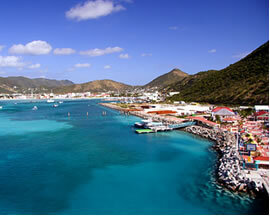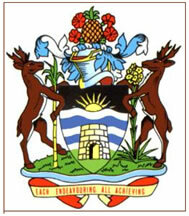Located in Central America, Antigua and Barbuda is a country formed by three islands of the Lesser Antilles archipelago, in the east of the Caribbean Sea. The island of Antigua received its name from the navigator Christopher Columbus, in 1493, as a tribute to the Sevillian church of Santa Maria de Antigua.
The island of Antigua, with 280 square kilometers, is the largest and most developed, has a jagged coastline, with bays and white sandy beaches that attract thousands of tourists. The island of Barbuda is 160 square kilometers and is home to approximately 2% of the Antiguan population. Redondo is the smallest island in the territory, with 2 square kilometers, it is a rocky and uninhabited island.

Antigua Island
Tourism is the main source of income in the country, another important activity for the local economy is civil construction. Antigua and Barbuda is considered a tax haven, due to its policy of attracting financial investments, guaranteeing high earnings and anonymity to investors.
The country gained its independence on November 1, 1981, admitted to the United Nations and the Commonwealth. The Governor General is Louise Lake-Tack and the current Prime Minister is Baldwin Spencer.

Coat of arms of Antigua and Barbuda
Antigua and Barbuda data:
Territorial extension: 440 km².
Location: Central America.
Capital: Saint John´s.
Tropical weather.
Government: Parliamentary monarchy.
Administrative division: 6 parishes and 2 territories.
English language.
Religion: Christianity 93.9% (Anglicans 33.8%, Protestants 30.9%, others 29.2%), others 4.7%, no religion and atheism 1.4%.
Population: 82,786 inhabitants. (Men: 38,878; Women: 43,908).
Ethnic Composition: Afro-Americans 91.3%, Eurafricans 3.7%, Europeans 2.4%, Syrian and Lebanese Arabs 0.6%, Indians and Pakistanis 0.4%, Amerindians 0.3%, others 1.3 %.
Demographic density: 188 inhabitants/km².
Average annual population growth rate: 1.57%.
Population residing in urban areas: 30.34%.
Population residing in rural areas: 69.66%.
Life expectancy at birth: 72.7 years.
Currency: Eastern Caribbean Dollar.
Gross Domestic Product (GDP): US$ 1,089 million.
GDP per capita: 12,799 US$.
External relations: World Bank, Caricom, Commonwealth, IMF, OAS, WTO, UN.
By Wagner de Cerqueira and Francisco
Graduated in Geography
Brazil School Team
countries - geography - Brazil School
Source: Brazil School - https://brasilescola.uol.com.br/geografia/antigua-barbuda.htm
